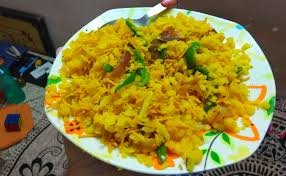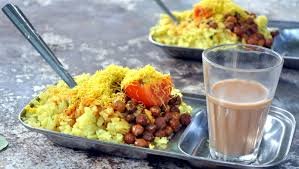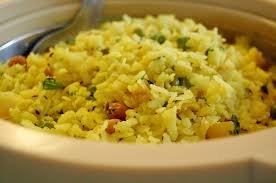
The Low-Calorie Wonder: Why Poha Is a Staple in Diets
In the pursuit of a healthier lifestyle, choosing the right foods is crucial. Among the plethora of nutritious options, poha stands out as a favorite, especially in Indian cuisine. This article explores why poha, a flattened rice dish, is celebrated for its low-calorie content and numerous health benefits, making it a staple in many diets.
What is Poha?
Poha, also known as flattened rice, is made by parboiling paddy and then flattening it into light, dry flakes. These flakes are then rehydrated and cooked with various ingredients to create a nutritious meal. Poha is a traditional breakfast and snack item in many Indian households, known for its simplicity and versatility.
Nutritional Profile of Poha
Poha’s popularity is not just due to its taste but also its impressive nutritional profile. Here’s a breakdown of the key nutrients found in poha:
- Low in Calories: One of the primary reasons poha is favored in diets is its low-calorie content. A standard serving of poha contains approximately 200 calories, making it an excellent choice for those looking to manage their weight.
- Rich in Carbohydrates: Poha provides a good amount of carbohydrates, which are essential for energy. These carbs are complex in nature, offering a sustained release of energy throughout the day.
- High in Fiber: The fiber content in poha aids in digestion, helps maintain healthy bowel movements, and keeps you feeling full for longer periods.
- Vitamins and Minerals: Poha is a good source of essential vitamins like B1 (thiamine), which helps in the conversion of food into energy. It also contains iron, which is crucial for the formation of hemoglobin in blood.
- Low in Fat: With minimal fat content, poha is heart-friendly and helps in maintaining overall health.
Health Benefits of Eating Poha
1. Weight Management
Poha’s low-calorie content makes it an ideal choice for those aiming to lose weight or maintain a healthy weight. The fiber in poha adds bulk to the meal, promoting a feeling of fullness and reducing overall calorie intake.
2. Good for Digestion
The fiber content in poha aids in smooth digestion. It helps in preventing constipation and other digestive issues by promoting regular bowel movements. Adding vegetables like carrots, peas, and potatoes to poha increases its fiber content, making it even more beneficial for digestive health.
3. Boosts Energy
As a rich source of complex carbohydrates, poha provides a steady release of energy. This makes it an excellent breakfast option, ensuring that you start your day with a nutrient-packed meal that keeps you energized.
4. Iron-Rich
Iron deficiency is a common issue, especially among women. Poha is a good source of iron, which is essential for the production of hemoglobin and the prevention of anemia. Squeezing a bit of lemon juice over poha can enhance iron absorption in the body.
5. Gluten-Free
For those with gluten intolerance or celiac disease, poha is a safe and delicious alternative. Its gluten-free nature ensures that everyone can enjoy it without any adverse effects.
How to Make Nutritious Poha
Making poha is simple and can be customized to suit your taste and nutritional needs. Here’s a basic recipe to get you started:
Ingredients:
- 1 cup poha (flattened rice)
- 1 medium onion, finely chopped
- 1 small potato, diced
- 1 green chili, chopped
- 1/4 teaspoon mustard seeds
- 1/4 teaspoon turmeric powder
- Salt to taste
- 1 tablespoon oil
- Fresh coriander leaves, chopped
- Lemon juice
- Optional: Peanuts, peas, carrots

Instructions:
- Rinse the Poha: Place the poha in a strainer and rinse it under running water until it softens. Drain and set aside.
- Prepare the Seasoning: Heat oil in a pan and add mustard seeds. When they start to crackle, add chopped onions and sauté until they turn golden brown.
- Add Vegetables: Add diced potatoes, green chili, and any other vegetables you prefer. Cook until the vegetables are tender.
- Cook the Poha: Add turmeric powder and salt to the pan, then mix in the softened poha. Stir gently to combine all ingredients.
- Finish and Serve: Cook for a few more minutes, then turn off the heat. Garnish with fresh coriander leaves and a squeeze of lemon juice. Serve hot.
Variations of Poha
Poha can be prepared in various ways to suit different tastes and dietary requirements. Here are a few popular variations:
1. Kanda Poha (Onion Poha)
A simple and classic version made with onions, mustard seeds, and basic spices. It’s a quick and easy breakfast option.
2. Batata Poha (Potato Poha)
This version includes diced potatoes along with onions, making it a more filling option. It’s especially popular in the state of Maharashtra.
3. Vegetable Poha
For a more nutritious meal, add a variety of vegetables like peas, carrots, and bell peppers. This increases the fiber and vitamin content of the dish.
4. Peanut Poha
Adding roasted peanuts to poha gives it a delightful crunch and a boost of protein. It’s a great option for those looking to increase their protein intake.
Incorporating Poha into Your Diet
1. As a Breakfast Option
Poha makes for an excellent breakfast option due to its low-calorie and high-nutrient content. Pair it with a side of yogurt or a glass of buttermilk for a balanced meal.
2. Mid-Morning Snack
Poha can be enjoyed as a light mid-morning snack. Its easy digestibility and light nature make it perfect for curbing hunger pangs without adding too many calories.
3. Lunch or Dinner
While traditionally eaten as breakfast, poha can also be served as a light lunch or dinner. Pair it with a salad or a bowl of soup for a complete meal.
Conclusion
Poha, with its low-calorie content and high nutritional value, is a versatile and healthy addition to any diet. Its ability to keep you full for longer periods, combined with its easy digestibility and rich nutrient profile, makes it an ideal choice for those looking to maintain or lose weight. Whether you enjoy it as a traditional breakfast, a light snack, or a part of a main meal, poha offers numerous health benefits that support overall well-being. Embrace this humble dish and discover the delightful ways it can contribute to a healthier lifestyle.

